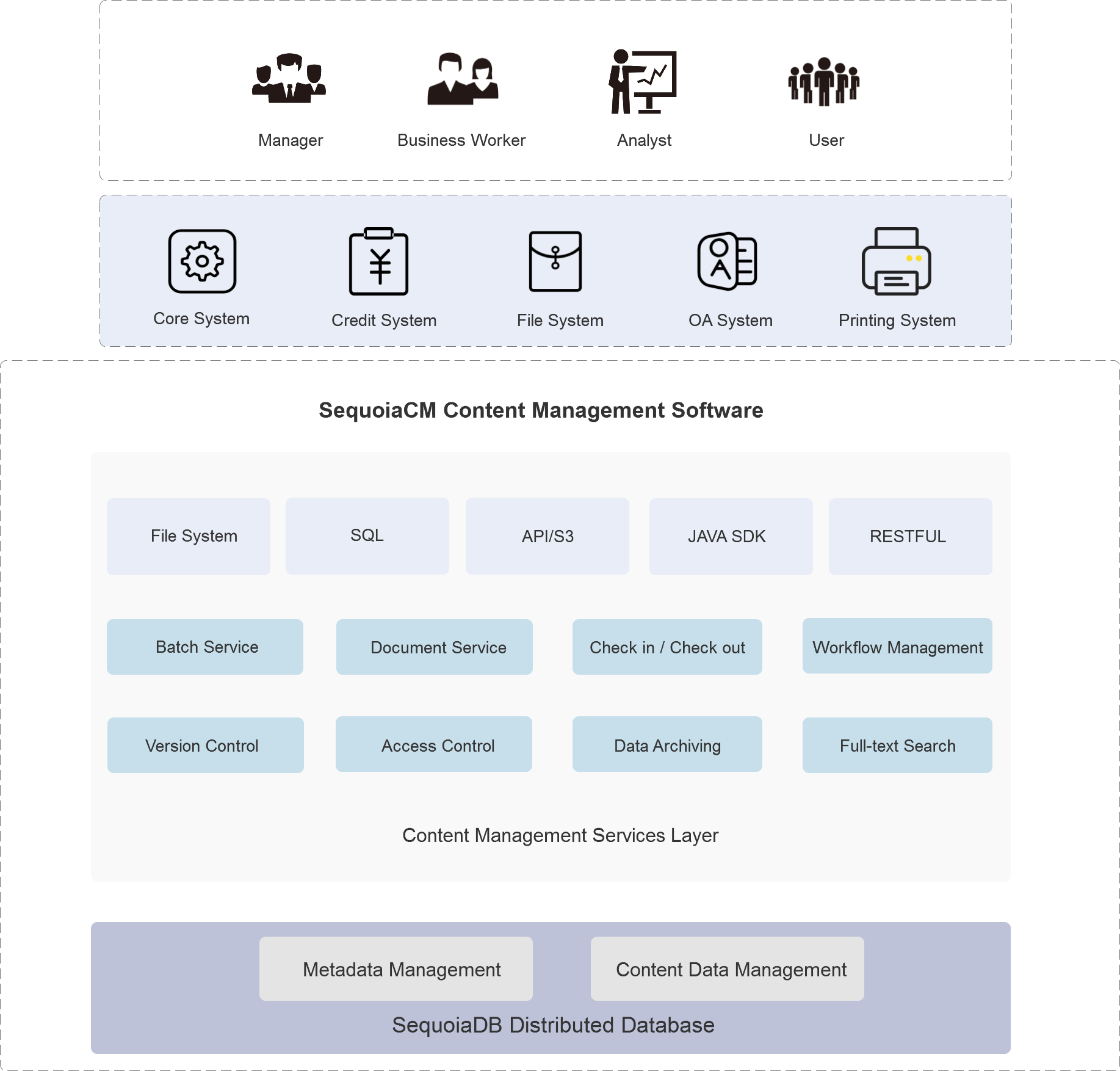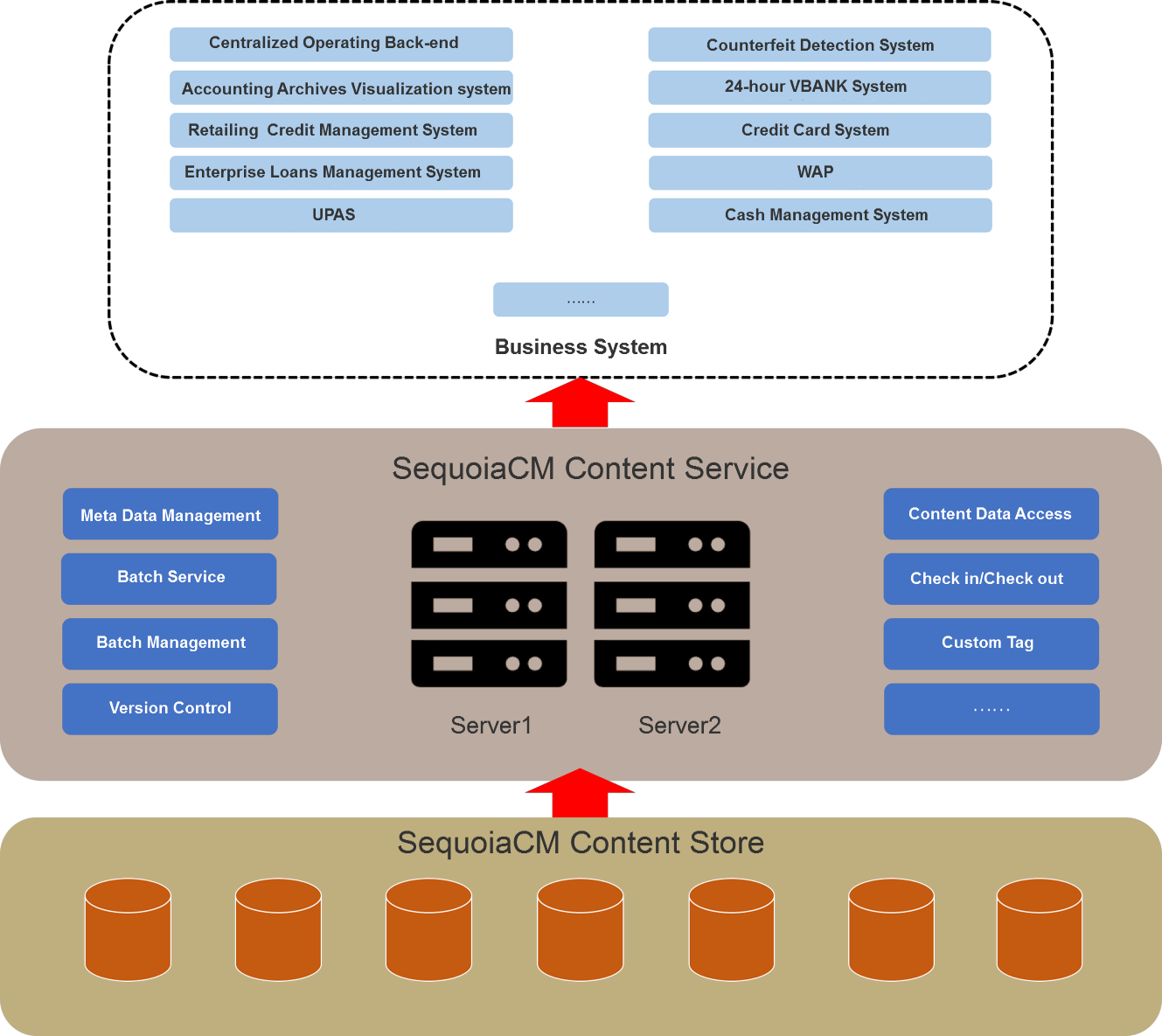Nowadays, more and more companies are incorporating unstructured data governance into their next generation IT system. From the perspective of traditional unstructured data management, most of the data are stored in the form of objects. For most cases of message type data, it is difficult to perform online retrieval and statistical analysis. The goal of unstructured data governance is to show how to use a unified platform for storage, query, statistical analysis, and even image speech recognition, tagging, and automatic classification in unstructured data .
In the traditional IT architecture, most unstructured data cannot be automatically identified. It needs to be classified by metadata tags at data entry. Since these metadata are basically tightly coupled to the business system, the traditional unstructured data management systems could hardly share data between business units.
Based on SequoiaCM, the unstructured data management platform can utilize containerization and distributed technology to uniformly store and manage the full amount of unstructured data in the enterprise. It can use AI, OCR and various voice text recognition technologies to achieve intelligent identification and classification of data. Furthermore, it can also perform life-cycle management on unstructured data according to user configuration policies, and achieve unified and integrated management, storage, identification, classification, and statistical analysis of enterprise unstructured data.

Financial imaging platform application
The financial industry will generate a large number of paper vouchers in business operations. Under the requirements of information processing and supervision, these paper vouchers need to be scanned into image files and stored for a long time. With the in-depth promotion of concepts such as online banking, process banking, direct banking, mobile operations, and centralized operation centers, financial institutions such as banks and insurance companies generally need to build a unified image management platform.
The imaging system mainly has the following characteristics:
• Large in quantity: the size of different banks, the type of business and the time of going online are different, and the number of files stored in business systems often reaches tens of millions or even hundreds of millions.
• High storage cost: the storage space occupied by the imaging system is from TB-level to the PB-level. To support large-scale access to image files and multi-service systems, the system has higher I/O requirements for storage devices. As a result, the storage cost of the image platform system is increasing year by year.
• Lifecycle management is difficult: image file access usually occurs within 3 months, and the probability of querying after one year is low. It is usually necessary to periodically backup historical data and use cold media for offline storage, but data availability is not guaranteed.
• Long backup time: data needs backup protection, but the backup of large files is very inefficient and takes a long time. The full backup often exceeds the time provided by the backup window.
• Historical image file query is difficult: due to the high storage cost, the historical image will be archived offline, so that the query of the historical image file requires a lot of processing costs to complete, and cannot guarantee "quick response".
• The amount of data increases year over year: with the expansion of business varieties, the increase in the number of outlets, and the new demand for mobile operations, the amount of data has increased significantly over time. This has led to an ever-increasing demand for production system capacity and the need for continuous expansion.

In response to these challenges, a new generation of imaging systems based on SequoiaCM has solved these problems, including self-service counters, accounting imaging systems, and so on. The SequoiaCM's imaging platform can provide the following values to its customers :
• Elastic growth of image data: image data storage and computing resources are dynamically changed with business needs to achieve storage up to PB level while image data continues to be online
• Content Management: rich content management capabilities, including lifecycle management, content data access, batch services, version control, and check-in and check-out services
• Unified management: unified storage of image file data and metadata to improve application performance and simplify operation and maintenance
• Flexible criteria retrieval: for massive image data, achieving flexible criteria retrieval and milliseconds-latency real-time query
• Data security: active-active cross-site disaster recovery ensures the content data to be safe and available for long-term. Data security has greatly increased, while meeting the active-active configuration and other industry regulatory requirements
• Reduce costs: use low-cost general-purpose hardware devices and distributed architecture to significantly reduce the total cost of ownership (TCO) to 1/3 of the original ECM solution